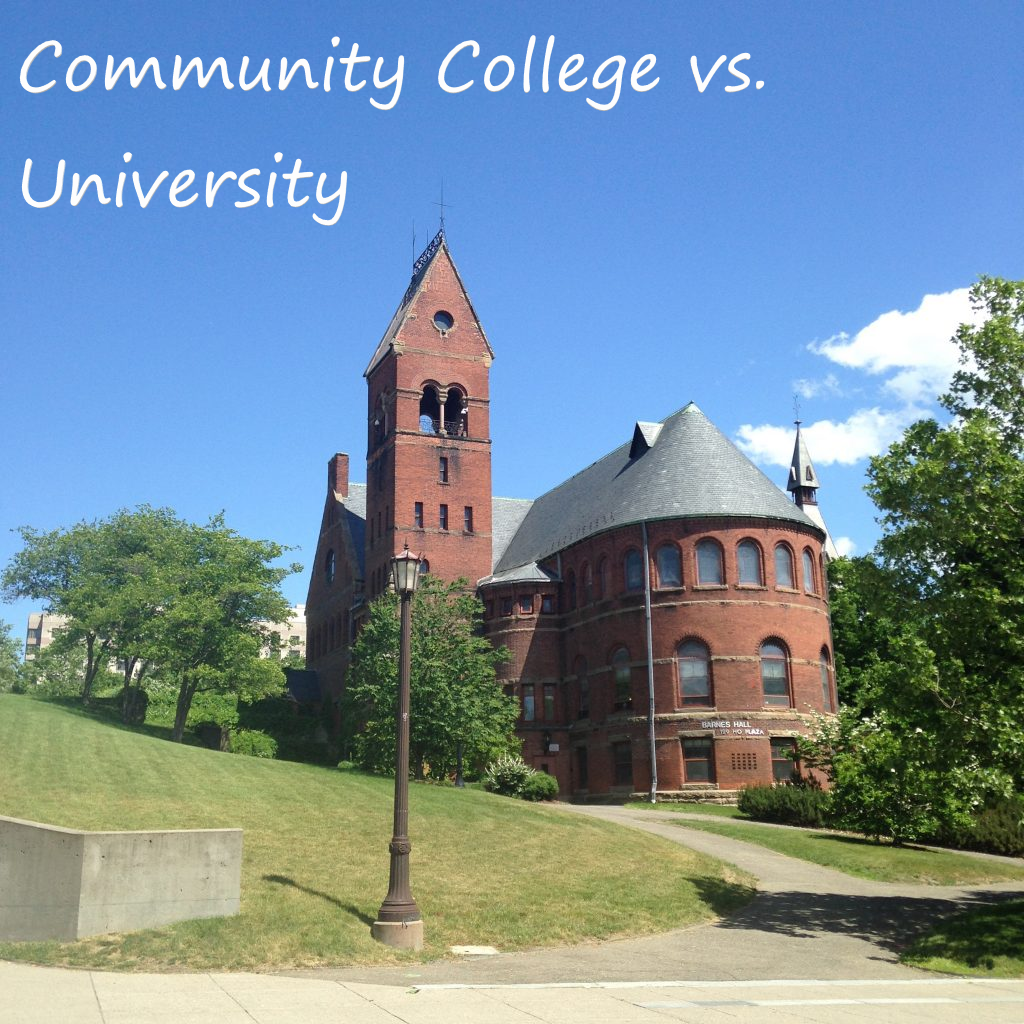As with all advice, this post will not fit all groups of adolescents. In specialized areas, a 4-year school may be the best starting choice. That would-be physicist may be unable to find a community college that offers the right courses. Even some 4-year schools may not offer a sufficiently robust curriculum. That’s why a teacher or adult who KNOWS a child should be helping with virtual college fairs and the college selection process.

The counselors are out of the building in many locations. The buildings are empty. But seventeen- and eighteen-year-olds are still making plans for their futures. I just read about fraudulent colleges and my memory took me back to a math student I had in an alternative high school.
I tried so hard to talk that kid out of the now-defunct Westwood Colleges. I couldn’t do it. The recruiter had waved a $500 scholarship in front of him and I could not get past that “scholarship.” I explained the numbers. I pointed out that the recruiter’s offer to help him obtain loans worked for Westwood, not him — they got the money, he got the debt. I tried to suggest alternatives that were less expensive and more highly regarded — such as his local community college. But I could not get past that $500. The recruiter had sold that boy.
Maybe America’s student loans will be forgiven someday, but I wouldn’t bet any lives on that forgiveness. College debt currently leads to so many life postponements — in particular, housing purchases put off for later despite the fact that home ownership is the primary tool for building wealth in our economy. Many, many young (and older) people can’t afford both those college loans and a mortgage payment with accompanying upkeep and insurance costs.
Eduhonesty: The college fairs have gone virtual. The counselors and social workers are out of the building in many areas, along with their students. While schools are still trying to provide the services that historically have come with high school education, the fact is that 2020 is a time of disconnects.

I helped some students as I walked back from obligatory college fairs. Conversation allows adults to catch misconceptions and impractical plans.
“Oh, no, Ms. T. College is not going to cost me anything. I am going to get financial aid,” a wonderful young man once said to me. He had no idea how the system actually worked.
A sharp young woman explained that she had thought, “Interest is what you pay when you are late making your loan payment.” She already had the loans, too. That huge misconception was about to take a chunk out of her every future paycheck for years, maybe decades.
Some families can easily fill in all the information required to make the college application process work. When parents attended college and once took out their own loans, they know the system. But lots of parents in the U.S. never attended college, while their kids have been told every year since kindergarten that they eventually had to matriculate into a college or university.*
Some of those high school students are navigating the college application process right now. I suggest high school teachers and other concerned adults check in on where their students are at in this process. What are they thinking? What have college recruiters told them? Have they stumbled on any “$500 scholarships”?
I also suggest trying to sell the local community college.
I picked up a bunch of dorm overflow from a student at the Illinois Institute of Technology last week. I have soldering equipment, a humidifier, mysterious plastic tubes and I-don’t-know-what-stuff in my garage, all too tough to get back to Alaska. He won’t be at school this spring, although he’s planning to come back for summer. Many kids will be at home next semester. Going home makes perfect sense, too. We could not eat in the student union. You have to get your hopefully germ free box and take it out of the student union into the midwestern winter or your dorm room. No hanging out with buddies in the traditional college sense is allowed. My youngest is currently living in Pittsburgh, Pennsylvania while attending college in Ithaca, New York.
Why spend 4-year money for virtual instruction? Especially starting students should be considering community colleges. Tuition is a fraction of what the state university costs, and often a tiny fraction of private university tuition. Community colleges offer many practical alternatives, such as courses in auto repair, CAD/CAM operation and nursing. For those looking at a four-year degree, that English, Biology or Chemistry 101 class has to be gotten out of the way sometime. I learned a great deal of French in community college, and I loved the math labs, the one I used as a student and the one that later offered me a tutoring position.
Virtual college fairs scare me. Zoom chats are a pale substitute for actual conversation. Yes, you can ask questions and get answers. But where are the listeners to step in afterward and tell students vital facts that may be omitted? Here’s an example:
“That’s right — students at Pratt Institute pay nearly $20,000 in fees ON TOP of their tuition. That’s twice the cost of tuition at some state schools. With the cost of fees and tuition combined, the average net cost of attending art school is $42,000. It’s critical that students take these additional fees into consideration when they think about how they’re going to finance an art education.”
The college isn’t going to share information like the fact that “Fine arts degrees are some of the lowest-paying degrees available today with an average starting salary of just $35,600.” (Same source.) It’s not going to talk about costs at all if possible. After all, the college gets the money. The student carries the debt.
Reader, if you know young adults at this vulnerable age, please check in with them. Don’t let the college search be managed online from a bedroom somewhere without objective guidance from outside. High school teachers, if you can work college finances into your lessons, you truly could rescue a kid, making it possible for him, her or they to buy a house later, rather than struggling with rent and car payments.
Life will go back to normal. Until it does, our children should not pay private university tuition to complete breadth requirements, especially if those requirements are going to be batted out online. Young adults who are remote learners are especially vulnerable to $500 scholarships right now, I’m sure. Let’s make sure they understand how to effectively spend tuition dollars.
*We desperately need to restore vocational/technical education — the new “CTE or career and technical education” label sticks in my throat somehow — to a place of prominence in our high schools.
